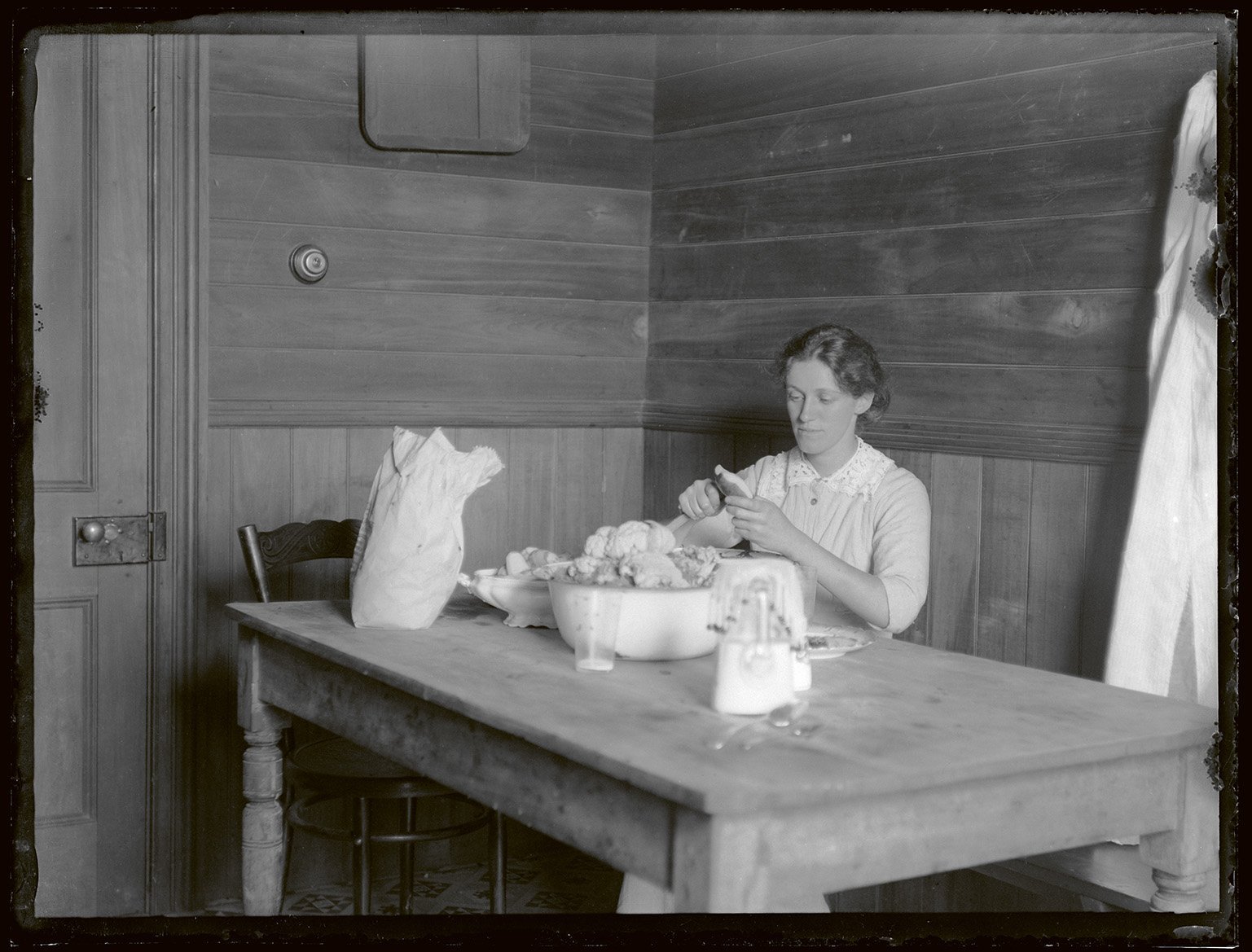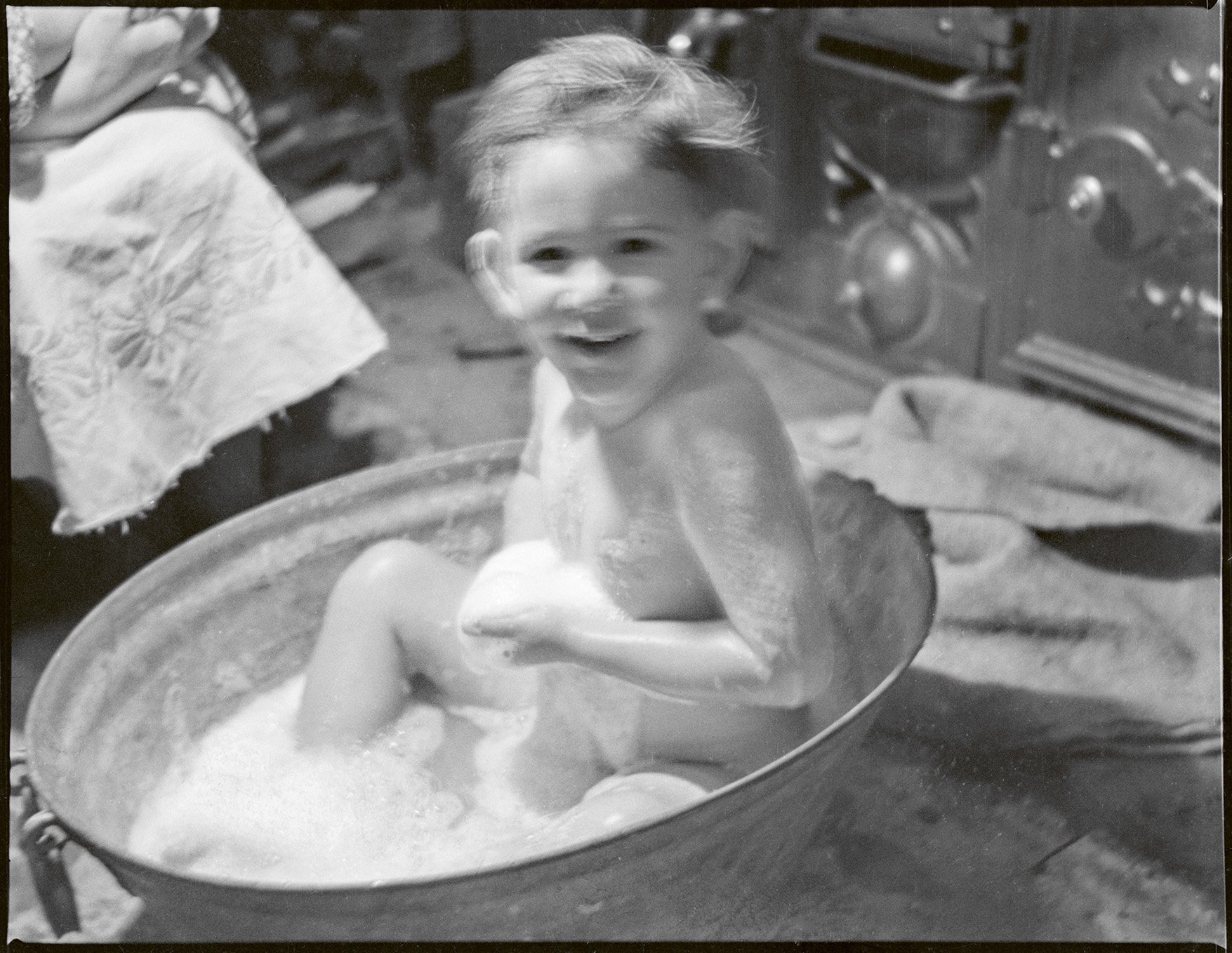
It is 1913, an apron-clad Maud Atkins sits at a large wooden table peeling potatoes. A cluster of people stand around an open fire in Kaikohe in 1911. A little boy sits in a bath in front of a kitchen stove in the 1930s.
These black and white photographs, while very different, represent New Zealand’s early rural kitchens as historian Dr Katie Cooper has come to know them. She has spent many years researching the topic, first for her PhD and then for her recently released book Rēwena and Rabbit Stew: The Rural Kitchen in Aotearoa 1800-1940 showcasing the diversity of the kitchen in the 19th and early 20th centuries.
"It’s been really fun research. I haven’t tired of it after all those years, which is very lucky."
The rural kitchen is close to her heart, having grown up on a small farm herself in Gore with a dad who taught agriculture, as is her love of history — her mother is a history teacher.
"Pākehā rural life I was very familiar with, growing up in a farming community.
"Certainly, there are aspects of cooking and food sharing of te ao Māori that were not at all familiar to me. So there was a lot of learning in that."
However, no matter a person’s culture or whether or not they grew up in a rural environment or an urban one, she believes there are aspects of kitchen life that are familiar to all.
"To look at the kitchen is to see the hub and hearth of rural life."
Cooper’s deep dive into rural kitchens began when looking into topics for her PhD at the University of Otago and coming across a story about the university’s home science school extension service where they loaded up their cars with preserving equipment and food safes and travelled out to rural communities doing demonstrations on how to prepare healthy meals.
"Through that, this idea of focusing on the kitchen came up and has been growing since then."

"You get little tidbits here and there, little glimpses of the kitchen, but people don’t tend to write really extensive kind of descriptions of the kitchens that they worked in, you have to pull little, little bits and pieces of information from all sorts of different sources.
"I quite enjoyed the challenge of that."
She searched through manuscripts, autobiographies, diaries, magazines and official documents and publications such as the Waitangi Tribunal reports on access to resources from the era.
"I spent a lot of time looking at the women’s pages of rural magazines. It was quite a broad range of sources that I ended up using to build this story."
Surprisingly, she found that while the kitchen was very much a female domain. There were exceptions to that, as during the time period the ratio of men to women was not balanced.
"So you get a number of men who have to cook for themselves.
"They’re not in any kind of nuclear family units or anywhere close to a cook, so they might be working on stations or roading projects, things like that.
"And then they take that into their later life and then their kids remember them cooking or things like that."
One of the book’s chapters investigates the kitchen as a gendered space.
"That was really interesting. That was probably the hardest chapter too, because it’s such a complex issue and every person has their own kind of association with the kitchen."

"Preparing meals over an open fire or in a coal range could be back-breaking work, but it was also absolutely crucial to the wellbeing of the family and the maintenance of the community."
She found the discovery of how food was used to make social statements interesting, especially how overt it could be.
"Sharing of food and the quality of meals ... was really important and could be very sort of symbolic, if you like."
One of the stories she enjoyed came from J. S. MacKay’s description of Longland’s Station in the 1920s, in his memoir, talking of owner Joseph Preston eating at the "cookshop" alongside his musterers.
"On one occasion during this period, J. P. showed his displeasure when given preferential treatment in the matter of food by sweeping his plate and full pannikin of tea to the floor and angrily demanded that he be given the same as the men."
Another discovered in the women’s section of the Dairy Exporter in 1939 showed it was rare for visitors to be turned away if they needed food or help, but a failure to pay a visit to someone’s house could be considered a snub and an indication that the person considered themselves to be of a higher social class.
Cooper also looks at the role of food in traditions around manaakitanga and rural hospitality.
"Rural New Zealanders understood that the way in which they provided hospitality could clearly communicate where they considered themselves and others to be on the social ladder, the values they considered important and the community obligations they chose to uphold.
"The kitchen was a place where they made those important social statements."
They also took a very pragmatic approach.
"You know, you probably are going to need help from your neighbours at some point, and it’s probably pretty good policy to keep them on side and make a show of hospitality, whether you feel it, you know, inside yourself or not."

An extremely rare photograph of the interior of a 19th century Māori home taken around 1893 features Mrs Karetai, of Ōtākou, sitting in front of an open fire with pots hanging from a bar above.
Cooper found hākari or feasts served many social purposes beyond the satisfaction of hunger.
"I enjoyed that chapter. It was fun to write about the different types of meals and feasts and also the work that went into feeding so many.
Te ao Māori and the Pākehā rural world intersected at times, particularly in work settings, but remained largely separate through the late 19th and early 20th centuries.
"The kitchen has been a site of adjustment for Māori and Pākehā; a place where new ideas and technologies have been introduced and accommodated."
Her role as a curator on Te Papa’s histories and cultures team also aligned nicely with the research she was doing and enabled her to incorporate more of the objects used in the kitchen during the time period into the book.
"A kitchen is all about pots and pans and stoves and cooking tools, so it made a lot of sense to have some of those things in the book. It does give you a sense of the heft of them and it was actually really heavy, heavy work, cooking, lifting pots and pans off a a hot oven or, you know, off a fire and things like that was hard."
It also would not be a rural kitchen if animals were not mentioned, whether the family pet, working dogs or pests.
"There’s a bit of a section about that about the animals that were invited into the kitchen and kind of became part of the family routine.
"They had their meal at the same time as the family was eating or people were eating.
"And then those that weren’t invited like, yeah, plagues of rats and fleas and all those sorts of stories as well, which are some of the stuff of nightmares."













